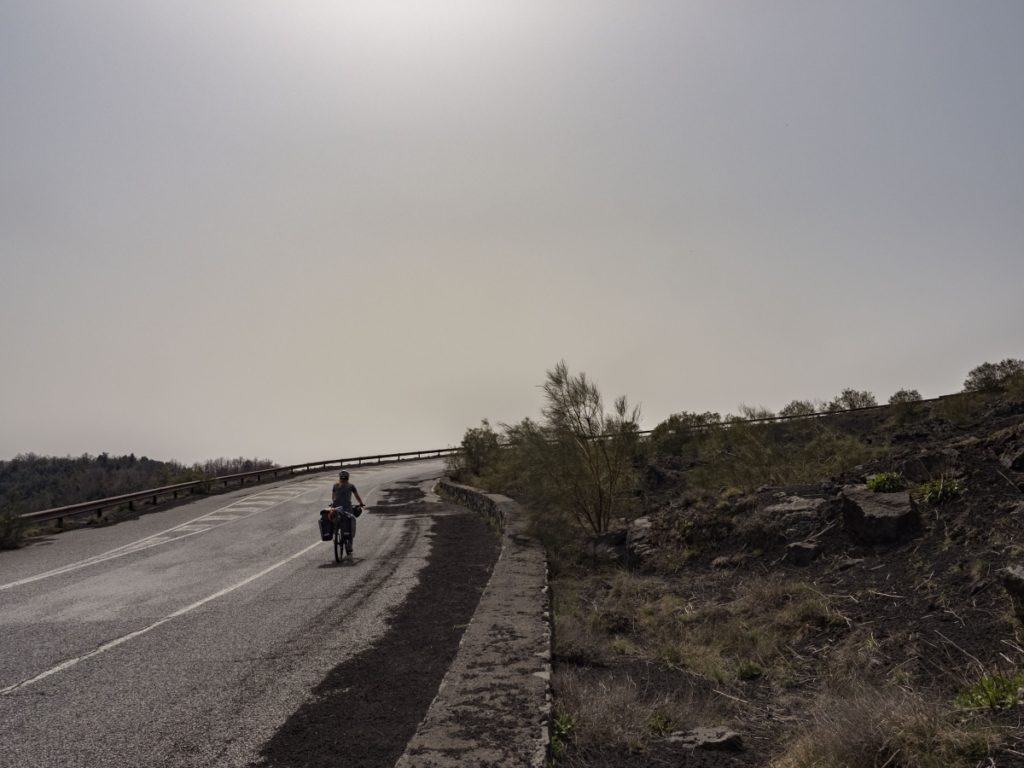The thrill of an open road, the wind in my hair, and the sun on my face always make me feel like I could travel on my bike forever. The heatwave can be a challenging companion on your cycling adventure. How to survive cycling in the heat? When is it too hot to cycle? How to prevent heat stroke and dehydration? In this article, I’ll share tips and tricks to help you conquer the scorching temperatures and keep cool during summer bicycle tours.
With global warming and more extreme summers, cycling in hot temperatures is something you need to prepare for, even if you avoid the tropics. Even if you stick to the UK or Scandinavia, there’s a good chance of almost 40° C in the summer.
If you’re on a bicycle tour and a heatwave hits, these tips will help you survive and make it safe and sound to your destination.

Hydration is key
This is a no-brainer. When cycling in hot temperatures, your body needs more liquids. But it’s easier said and done.
There are a few challenges with hydration on a summer bicycle tour.
How to make sure I drink enough water?
How much water you need is a very individual matter. It depends on what you eat, how hot it is and how much you cycle. Don’t believe anyone who says you should drink 2, 4, or 6 litres of water.
So how do you know if you drank enough? Or maybe too much? The truth lies in your pee. If your urine is darker than usual – you’re dehydrated. If it’s more transparent – you had too much water.
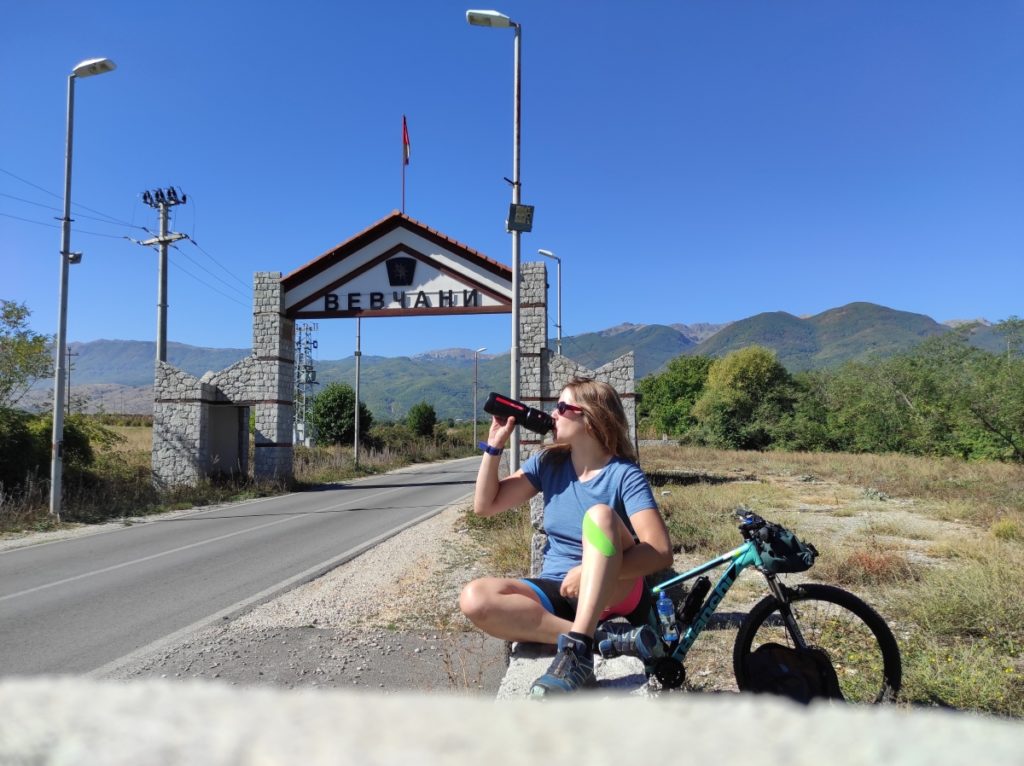
Water is not enough
Cycling is a strenuous exercise that squeezes a lot of sweat out of you. Sweating, you lose electrolytes like sodium, magnesium and potassium, causing more fatigue, cramps and headache.
During every bicycle trip, I carry electrolyte tablets or powder packets. They not only prevent dehydration but also add some flavour to my water (drinking four or more litres a day can make you hate the dullness of it). While regular beer is the worst possible idea when you’re cycling in the heat, a 0% Radler is a perfect refreshment and a great way to spice your drinks up.
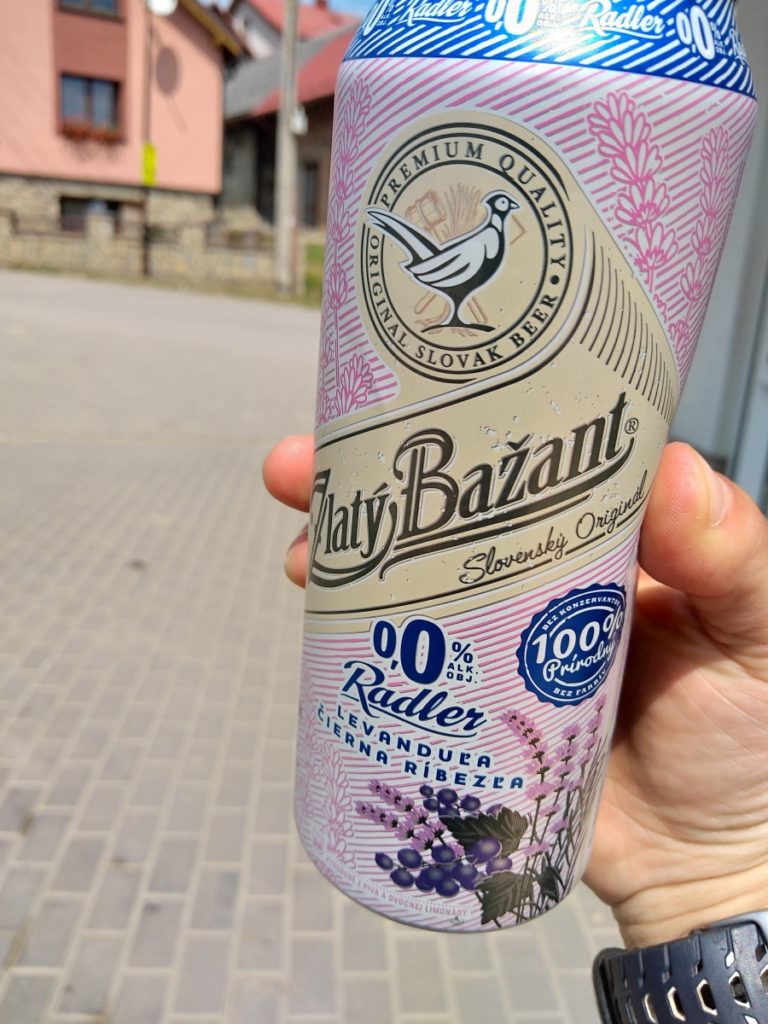
How to keep your water cold when cycling in hot temperatures?
Few things taste more disgusting than warm water from your cycling bottles. It was my biggest nightmare last year when I was cycling in Albania during a heatwave.
I would fill my bottles with cold water. Only 30-40 minutes later, it was almost warm enough to make tea with it. It didn’t help that my bottles were black.
If you want to keep your water cold longer, invest in insulated water bottles. And if you’re staying in a place with a freezer, put your bottles there overnight to enjoy a refreshing drink, at least for the first hours of your ride.
Carry a water filter
If you’re cycling through remote areas, a water filter is a great way to ensure you won’t run out of water. A water filter kills most bacteria and allows you to drink water even from lakes or rivers. This way, you can reduce the risk of running out of water when touring long stretches without civilisation.
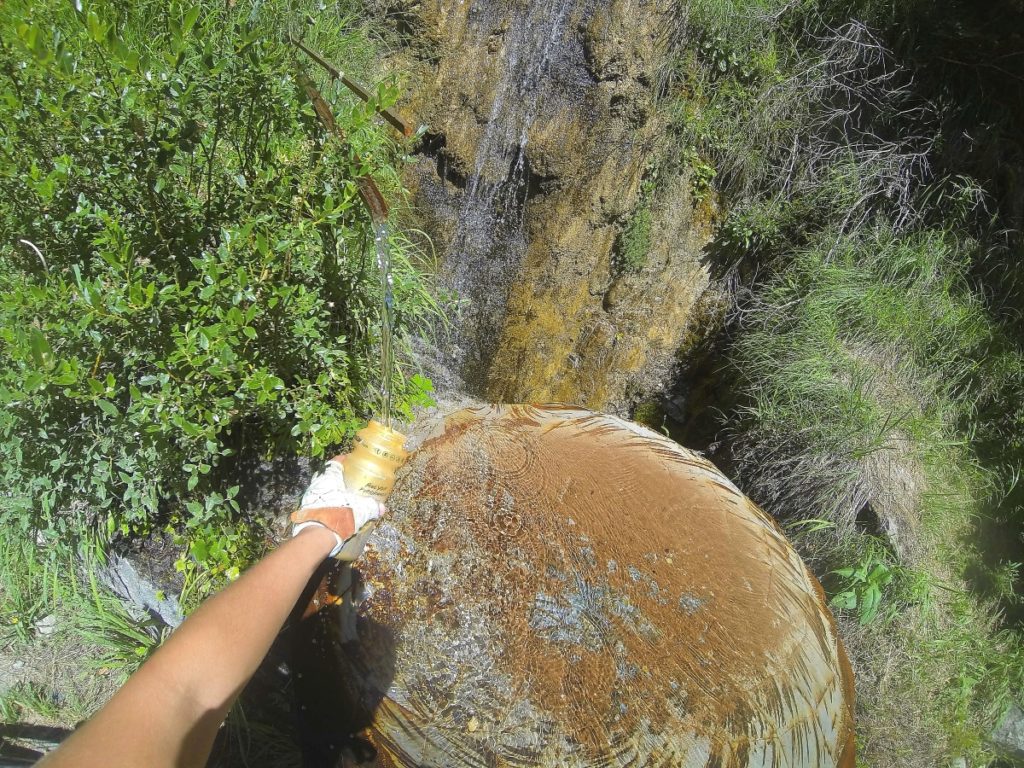
Adjust your schedule
I am not a morning person, but a 40-degree Celsius heat is a strong motivator to get me out of bed (or a tent) at 4 a.m.
Starting around 5 a.m. gives you at least four or five hours of cycling before the most scorching time of the day. Cycling between 11 a.m. and 3 a.m. can be dangerous on hot days. Time for a siesta!
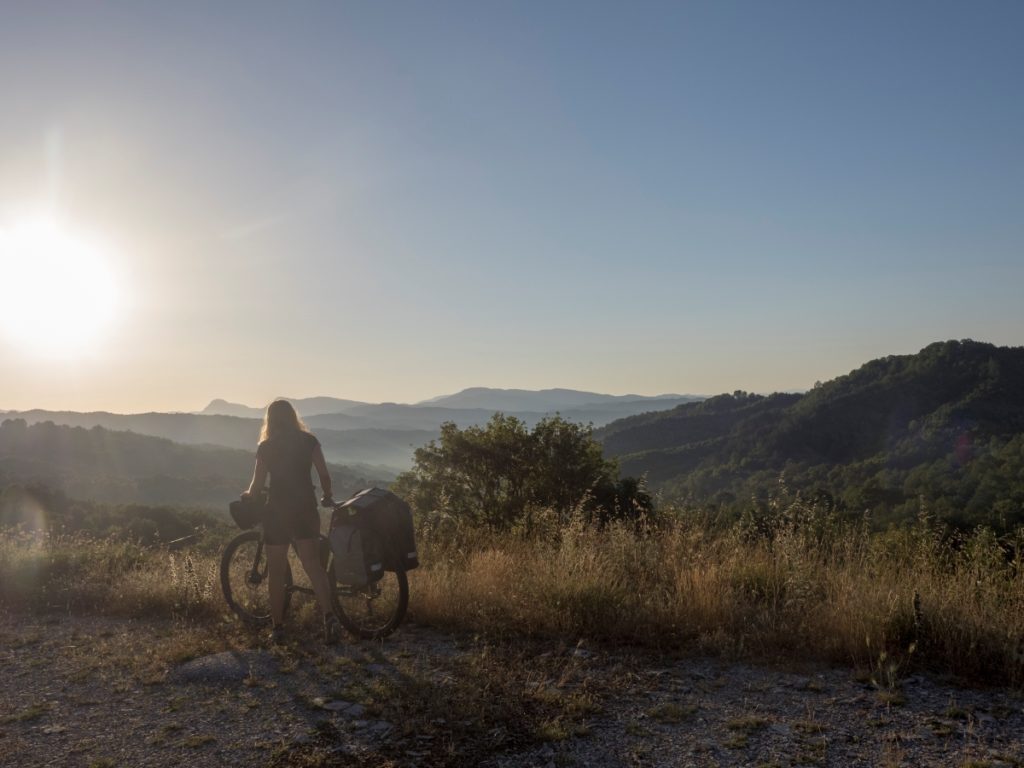
Find a place in the shadow, a restaurant or a museum with air conditioning.
You can hit the road again for two or three hours when it cools down in the afternoon.
Adjust your route
When the asphalt is melting and sizzling, you might have to forget about your original plans and ambitions. Sometimes simple adjustments in your route can help mitigate the heat and make your ride much more pleasant and safe.
Cycle along water
Double-check if you’ll have enough options to restock on water. Look for routes with rivers, lakes and fountains. Nothing feels as good as a dip into a cold lake or putting your head under a street fountain when the world is on fire.
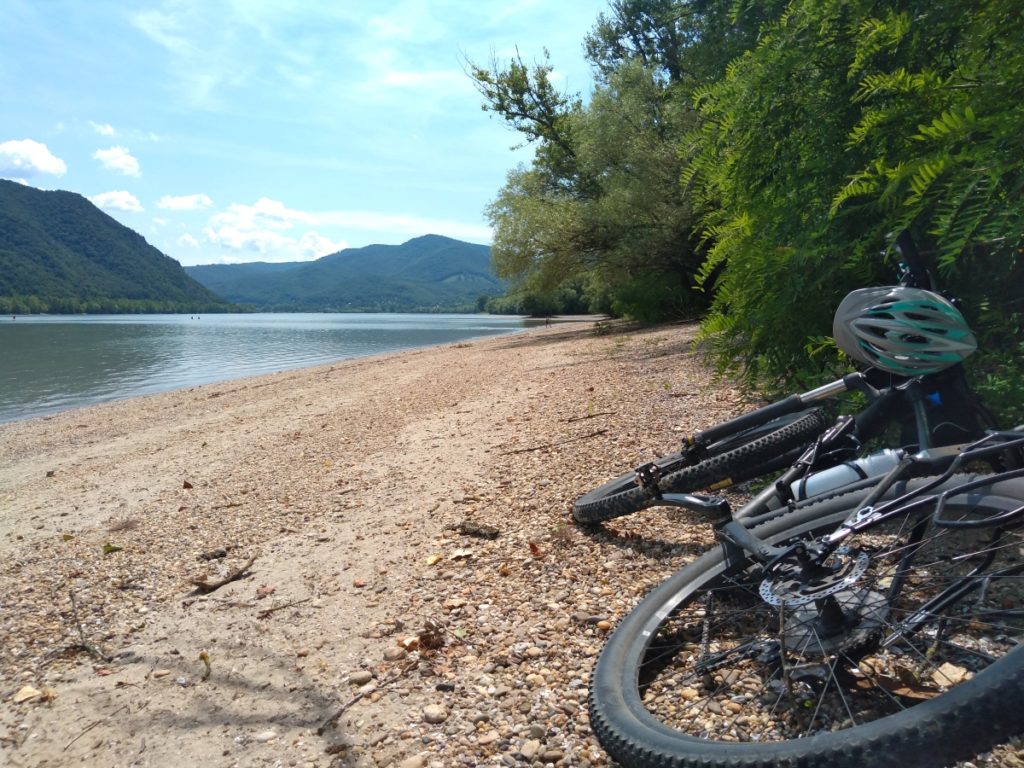
Check Google Satellite View for trees and shade
I sometimes find it surprising how much difference trees make when it comes to perceived temperature. What feels unbearable on a barren plain feels quite alright when you cycle through the woods.
When planning your ride, check on Google Satellite View if you’ll find shade on your way. It might not be the most direct route, but at least you won’t feel like you are in a frying pan.
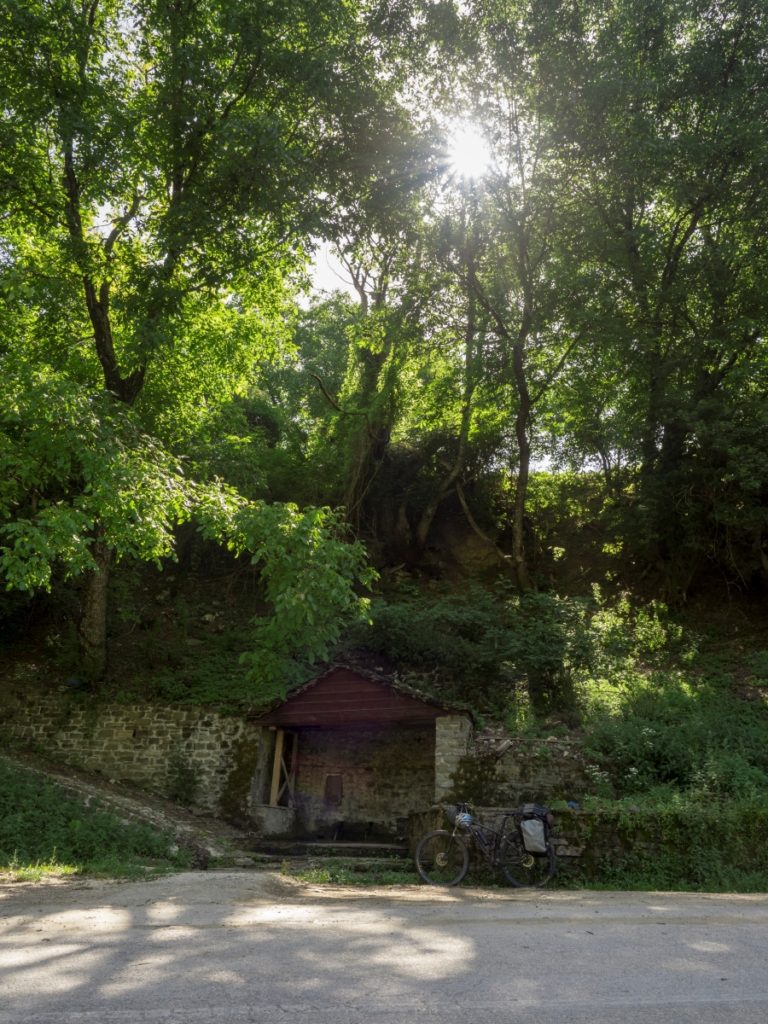
Head to the mountains
Higher altitude = lower temperatures. If you’re expecting the heat wave to hit, head to the mountains. Of course, you’ll have to suffer through the climbs to get there, but at least staying in the higher parts will be much more refreshing.
Have a backup plan
If you have no choice and must cross long kilometres through the desert or open landscape with no way to adjust your route and make it more pleasant, consider a backup plan. It’s better to hitch a ride or take a train than risk your health.
Manage your expectations
I know, we all want to prove we’re tough and strong. We want to challenge ourselves and go faster, higher, farther. But scorching heat is not the time to test your limits.
Take it slow, plan a shorter distance for the day and rest enough.
Don’t let your food spoil
When cycling in the summer, only carry food that doesn’t go bad easily and doesn’t melt. No cheese, no chocolate, and little amounts of fruits and vegetables.
A small insulated bag for food can help you keep your food fresh too.
If you’re carrying any medicine, keep them in an insulated bag.
Choose the right cloths
Opt for bright colours and breathable materials. Merino wool t-shirts are a game-changer, as their antibacterial properties keep them from smelling even if you have no place to do laundry.
Cover your head if you’re not wearing a helmet. If you’re wearing one, make sure it has good ventilation.
Another trick to prevent heat exhaustion is putting a bandana or buff soaked in water on your head or neck. Sometimes I also wear a slightly wet T-shirt (if it’s hot in the morning, you don’t need to wait until your laundry dries, it’s best when it dries on you!).
Don’t forget the sunscreen
When bicycle touring, you’re exposed to the sun for many hours every day. No matter the weather, sunscreen is a non-negotiable in this situation. And when it’s hot and sunny, you should protect your skin even more.
On my cycle tours, I always use SPF50 sunscreen. You should apply it before the ride in the morning and reapply regularly every two hours.
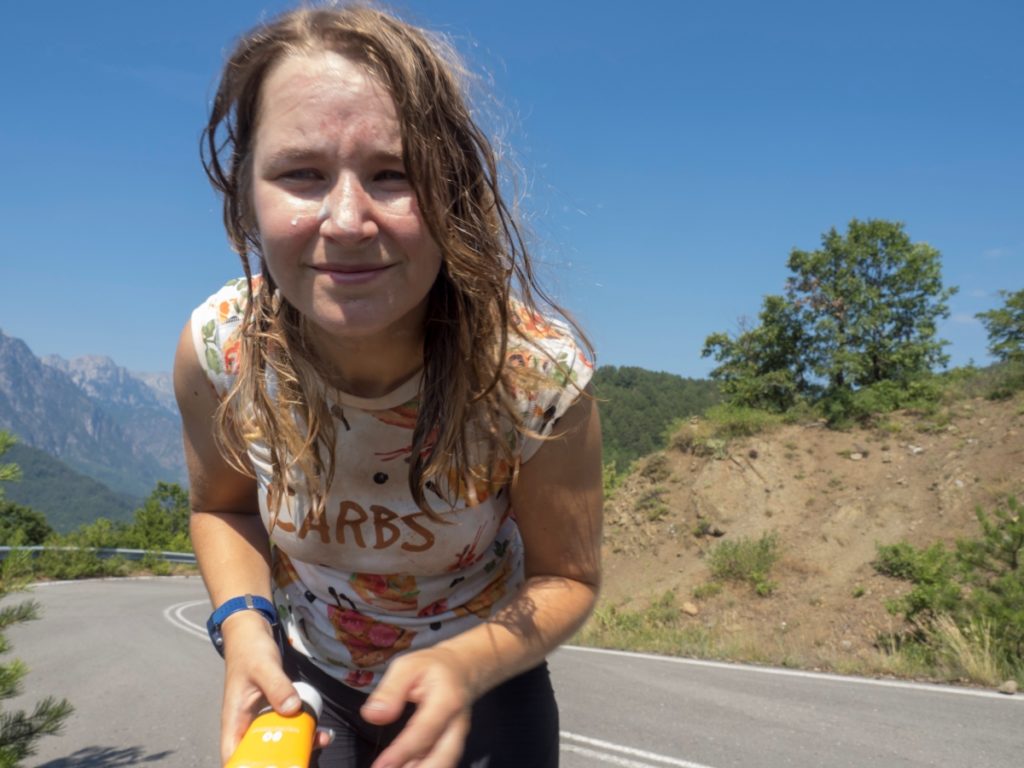
If, like me, you struggle to remember to put more sunscreen on your face and body, set alarms on your phone. I also keep my sun cream in the stem bag so it’s easy to reach.
When choosing a sunscreen, choose a waterproof one with a thicker texture. Cycling makes you sweat a lot, so you need a cream that won’t flow down your face after five kilometres.
Learn to recognise the symptoms of heat exhaustion and dehydration
A heat stroke can be very dangerous, so it’s crucial to recognise the symptoms of heat exhaustion and dehydration before your condition worsens.
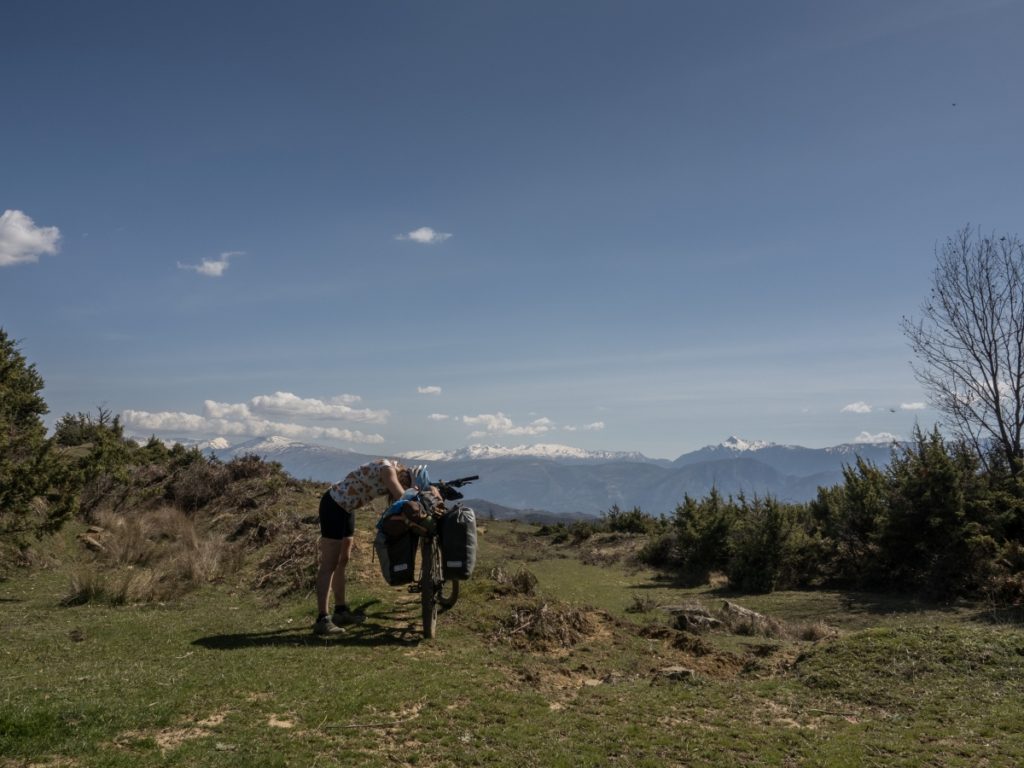
You should absolutely take a break from cycling if you
- feel dizzy
- have headache
- feel sick
- start sweating more than usual
- get a rush or pale skin
- have cramps
- feel extremely weak
Don’t trifle these symptoms trying to be a hero, especially if cycling alone or in remote areas. Move to a cool place (try to find shade), remove unnecessary clothes and drink plenty of water. If you don’t feel better after 30 minutes, call emergency.
